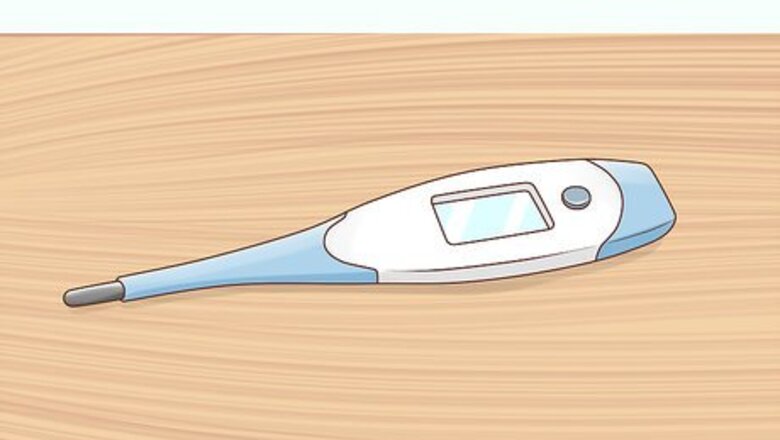
views
Checking a Cat’s Temperature
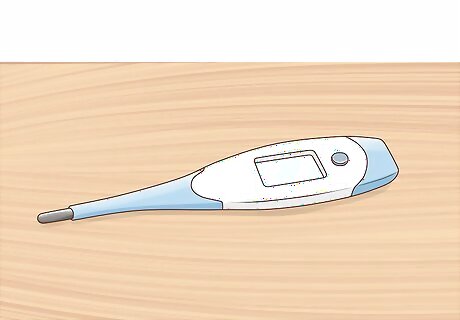
Buy a rectal thermometer. When shopping for a thermometer to take your cat’s temperature, opt for a digital rectal thermometer to get the most accurate reading. Oral thermometers can be bitten or swallowed, and do not offer as close of a reading of your pet’s temperature. For safety purposes, buy a plastic thermometer, which will not pose the risk of breaking that a glass model would. A rectal thermometer designed for use on an infant would be ideally built and sized for a cat.

Lubricate the thermometer. Lubricate the tip of the thermometer so that you can insert it easily without pain or discomfort to your cat. Use petroleum jelly or KY jelly, which you can find at most pharmacies. Avoid using the thermometer without lubrication, which could be painful for your cat and create negative associations with having its temperature taken.
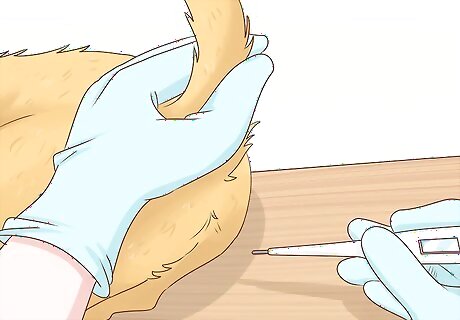
Insert the thermometer. Have your cat lie on its side and gently move its tail aside. Gently insert the thermometer into the anus, about the length of your cat’s foot (approximately 1-1.5 inches). Brace your cat while waiting for the digital thermometer to beep, indicating that your cat’s temperature has been reached. Note that a normal temperature for your cat should be between 100 and 102 degrees Fahrenheit (approximately 38-39 degrees Celsius). If your cat’s temperature is higher, contact your veterinarian. A temperature at or over 104 degrees Fahrenheit (40 degrees Celsius) should prompt an immediate call to your vet.
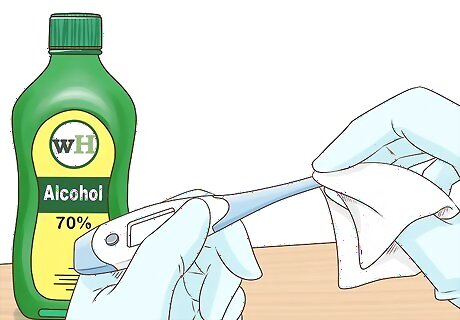
Clean the thermometer. After using a rectal thermometer, clean it thoroughly before putting it away. Be sure to remove any traces of fecal matter and wipe the thermometer down thoroughly with a paper towel soaked in rubbing alcohol to disinfect it. Note that 50-70% rubbing alcohol will disinfect better than 90% alcohol.
Checking Your Cat’s Heart Rate and Respiratory Rate

Start practicing when your cat is healthy and relaxed. Start practicing how to check your cat’s heart and respiratory rates when it is calm and in good health, so that you know what you are doing in case of an emergency. This will also provide you with a good picture of your cat’s normal vital signs to use as a comparison when it might be sick or unwell.
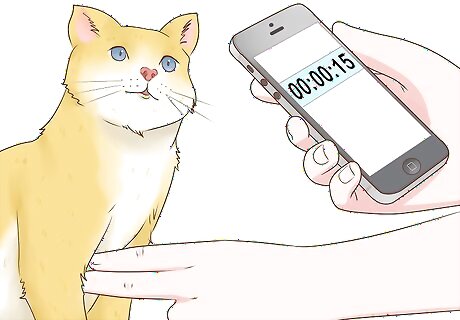
Measure your cat’s heart rate. Use your smart phone, a stopwatch, or a wall clock with a second hand to monitor the time. Place your left hand over your cat’s left side, underneath its front leg. Count the number of beats over fifteen seconds, then multiply the number by four to get the reading. A normal range for your cat’s heart rate would be between 150 and 220 beats per minute. If you get a reading much higher or lower than this, consult your veterinarian.

Determine your cat’s respiratory rate. Position yourself in front of your cat with a clear view of its chest while it is sitting up. Watch your cat’s chest moving up and down, and count either inhalations or exhalations for 15 seconds. Multiply by four to get your cat’s respiratory rate, which should fall between 15-30 breaths per minute. You can also place your hand gently on your cat's side to feel their respiration. Regardless of the respiratory values, contact your veterinarian if your cat’s breathing is labored, shallow, rapid, or irregular.

Ask your vet for a demonstration. If you are unsure about how to take an accurate reading, ask your veterinarian if they can show you how to check your cat’s heart rate and respiratory rate at your cat’s next appointment. Ask any questions you might have (e.g. “Where exactly should I position my hand to feel my cat’s heart rate?”). In addition, ask your vet what values fall within the normal range for your cat.
Relaxing Your Cat

Apply gentle pressure. To make the process of checking your cat’s vital signs easier, calm it by applying constant, gentle pressure to its torso. Grasp your cat’s torso firmly with one arm while checking its vitals with the opposite hand, or have a friend or family member assist you. You can also purchase a pressure shirt for your cat, a weighted pet garment designed to reduce your cat’s anxiety during trips to the veterinarian and other stressful situations.
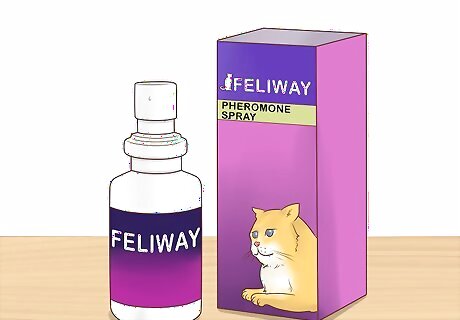
Use a pheromone spray. Ask your veterinarian if a pheromone spray would be a suitable way to relax your cat. Synthetic pheromone sprays mimic a cheek pheromone that cats release when bonding with each other and their owners. Popular brands like Feliway are available online or through veterinary clinics.

Give your cat a calming herb. There are many herbs that have a calming effect on cats and can make them more amenable to having their vital signs checked. These non-toxic plants are best given to cats in loose, dried form, either sprinkled in their play area or inserted into a refillable toy (approximately 1 tsp or 0.5 oz.). Visit a pet store or natural health store to purchase: Catnip, which can make your cat excitable for a brief period of time and eventually relax it. It will take at least 15 minutes for your cat's heart rate and respiration to slow down and return to normal. Valerian, which can induce relaxation and sleep after a short period of heightened energy. Chamomile, which reduces stress and anxiety.




















Comments
0 comment